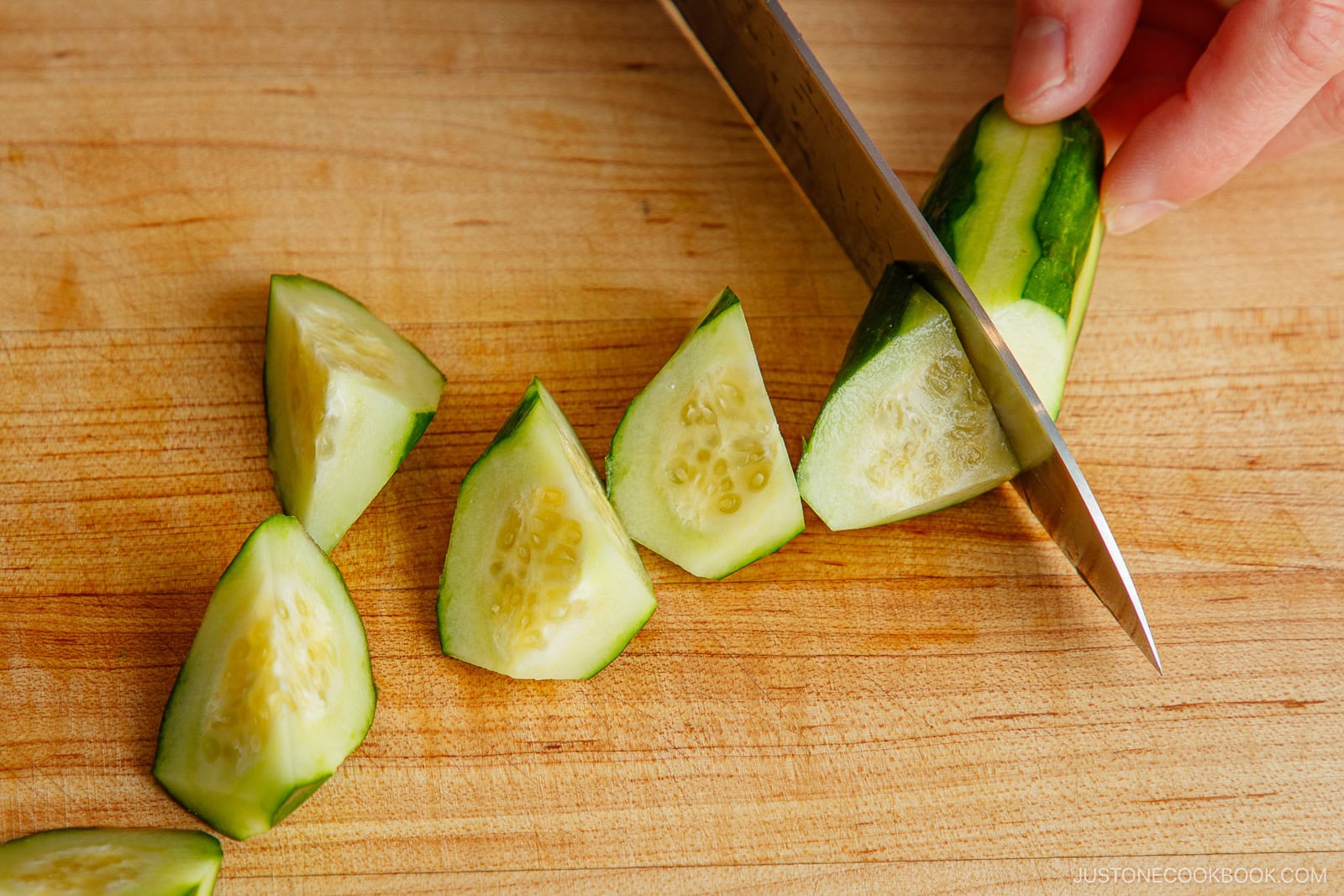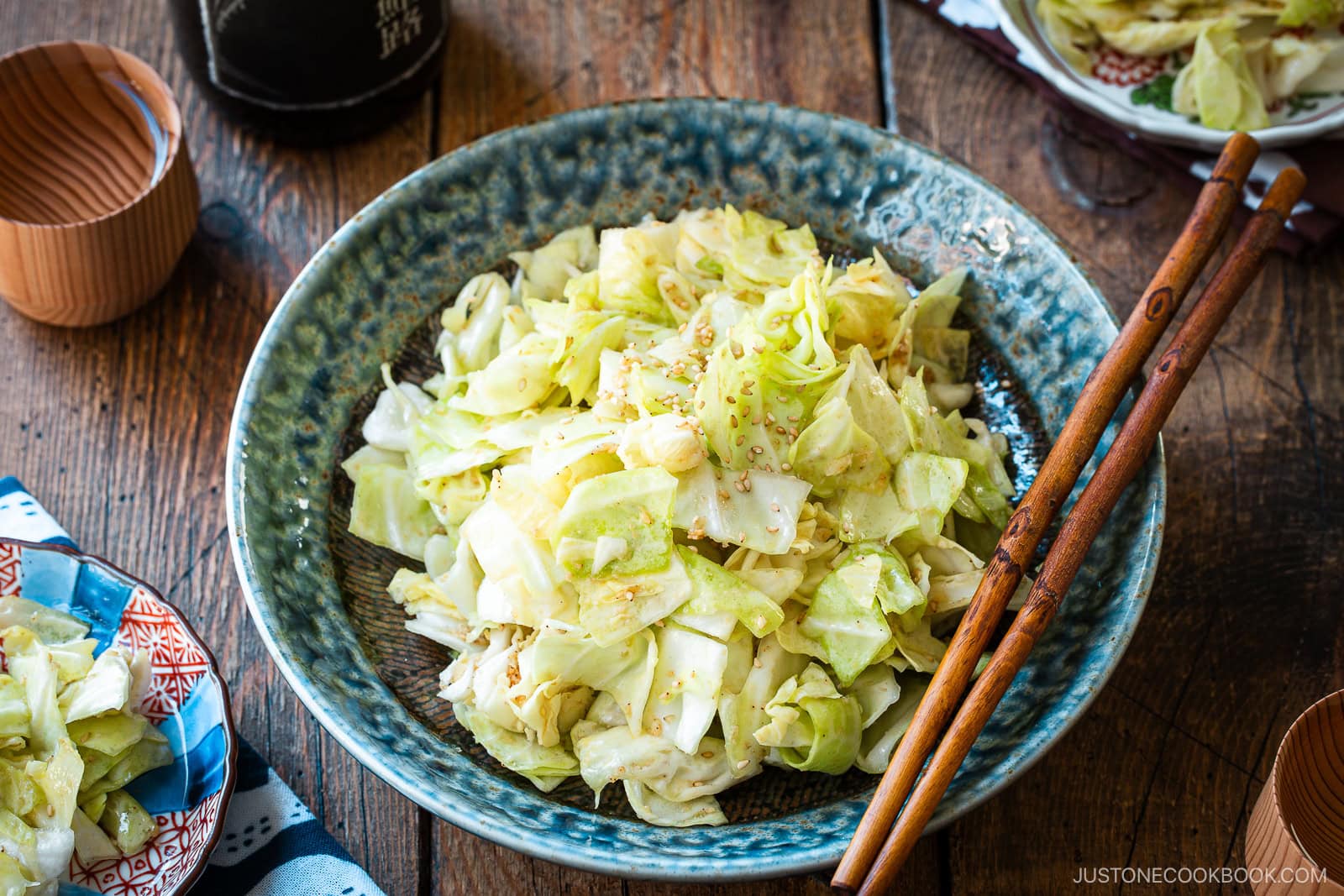Discover the rangiri “random cut” technique with this straightforward tutorial. This Japanese method of irregular rolling cuts produces uniformly sized chunks of root vegetables, eggplant, and cucumbers, enhancing the taste and texture of your Japanese dishes.
The rangiri cutting technique is essential in Japanese cooking for making irregular rolling cuts. This method creates vegetable pieces with intentionally varied surfaces, allowing them to cook evenly and absorb flavors more quickly. In this tutorial, you will learn the rangiri: random cut cutting technique, enabling you to prepare vegetables in this appealing shape for your Japanese recipes.
Incorporate the rangiri cutting technique in my Nikujaga (Japanese Meat and Potato Stew), Tonjiru (Pork and Vegetable Miso Soup), and Japanese Chicken Curry recipes!
What is Rangiri?
Rangiri (乱切り) translates to “random cut” in Japanese, yet it is a deliberate technique. This vegetable cutting method creates irregular, angled chunks by rotating the ingredient between each slice. It is ideal for cutting root vegetables, cucumbers, eggplants, and other cylindrical vegetables into uniformly sized pieces. Although the surfaces may vary, they cook more evenly and absorb flavors effectively.
Why I Love the Rangiri (Random Cut) Cutting Technique
- Veggies absorb flavors faster – This method increases the surface area of the ingredients, helping them absorb seasonings more quickly. I particularly enjoy using these random cuts for simmered dishes and stews.
- Ingredients cook at the same rate – Rangiri allows me to cut the entire length of a carrot, eggplant, and other vegetables into similarly sized chunks, ensuring all pieces cook evenly for the perfect texture.
- Makes an attractive shape – This technique transforms vegetables into unique and visually appealing shapes, adding a beautiful, wabi-sabi quality to stews and simmered dishes.
- Results in less waste – By controlling the shape and size of the pieces cut with rangiri, I can utilize even the thick and thin ends of root vegetables that I might otherwise discard.
Types of Food for Rangiri (Random Cut)
- Carrot
- Cucumber
- Daikon
- Eggplant
- Lotus root
- Burdock root (gobo)
Find the printable tutorial below.
How to Make Rangiri (Random Cut)
- Make a diagonal cut. Hold the vegetable on the cutting board and cut a piece diagonally to the desired size with a sharp knife.
- Rotate a quarter turn. Roll the ingredient 90 degrees, then cut again at the same angle, keeping the pieces the same size.
- Repeat. Cut → roll → cut → roll until you reach the end of the vegetable.
Nami’s Tips
- Keep each piece the same size and shape – This is the key point for rangiri to promote even cooking, despite the irregular cuts.
- Rotate the vegetable a quarter turn – After each slice, roll it 90 degrees before you cut again. I watch my last cut surface to keep track.
- Cut at the same angle every time – I hold my knife in the same position as I roll the veggie with my other hand. Maintain that diagonal for a consistent look and to create the most surface area.
- Adjust for thickness – If your veggie is thick at one end and thin at the other, like a carrot, please adjust where you cut to keep everything a similar size and thickness. I always maintain the same knife angle, so the chunks have the same general shape.
- Keep your knife blade sharp – I sharpen my knife regularly for safety and precision. This way, cutting is effortless, and you’ll achieve very clean cuts.
How to Use the Rangiri (Random Cut) Cutting Technique
Now that you know how to cut rangiri, I hope you incorporate this unique and effective technique for the vegetables in your home cooking. Below are some of my favorite Japanese dishes that utilize this cut.
Frequently Asked Questions
When preparing Japanese cuisine, I use various cutting methods. Some unique techniques include ran-giri, sogigiri (shaved cut), hangetsu-giri (half-moon cut), zaku-kiri (rough chop), and kazari-kiri (decorative cuts). Additionally, I employ basic techniques like usugiri (thin strips), hosogiri (thin slices), wa-giri (round slices), nanamegiri (diagonal cut), and sengiri (julienne cut). With practice, you can learn many of these culinary skills using my Japanese Cutting Techniques tutorial.
Rangiri is best suited for root vegetables or cylindrical Japanese vegetables. For aromatics like onions, garlic, ginger, and green onion, refer to my Japanese cutting techniques guide for more suitable methods. Cabbage leaves are also not ideal for rangiri.





